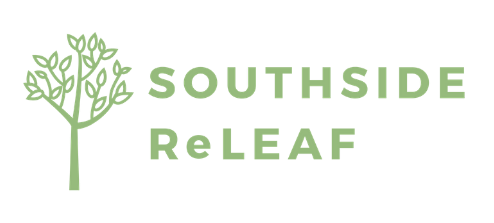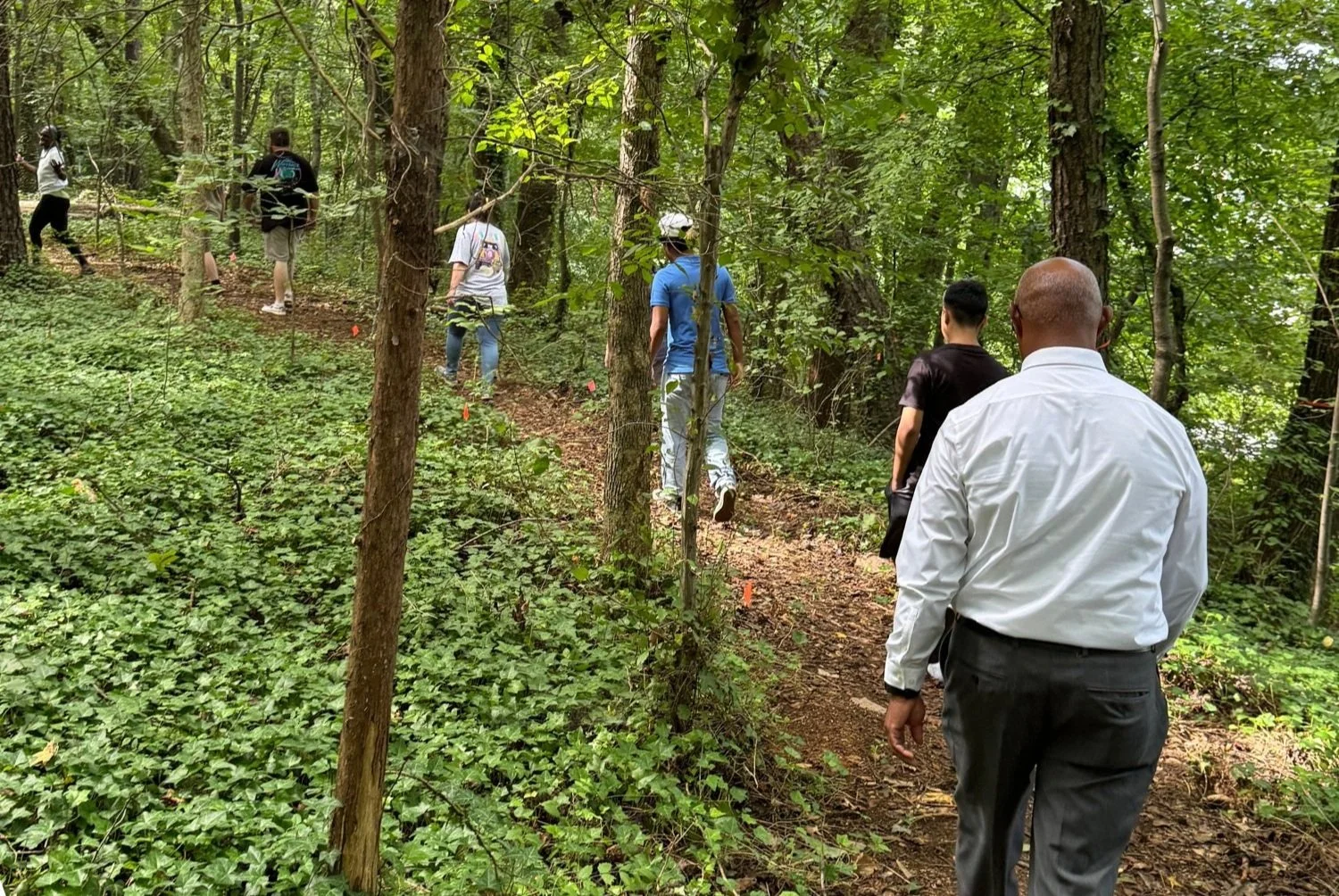Greening Richmond's Southside and Achieving Environmental Justice
by V. Jones, Southside ReLeaf Program Manager
Environmental Justice in Urban Spaces
Southside Richmond, VA—Situated and stretched between the Chippenham Parkway and the James River. The many spaces, cultures, and infrastructures of Richmond's Southside host a rich and complex history that reflects both the challenges and resilience of its communities. Like many areas across America, these neighborhoods have experienced the impacts of historical redlining, industrial development, and environmental inequities that continue to shape its landscape.
According to Merriam-Webster, the word environment is defined as the circumstances, objects, or conditions by which one is surrounded: the factors and influences that affect the growth, health, progress, functioning, etc., of someone or something. Environmental justice recognizes that Black and Brown communities often bear a disproportionate burden of environmental hazards in tandem with limited access to green spaces and their benefits. In Richmond's Southside, this disparity manifests through:
Higher exposure to urban heat islands.
Limited access to parks and green spaces.
Reduced tree canopy coverage compared to other parts of the city.
Historical placement of industrial facilities near residential areas, like off Richmond Highway.
Southside ReLeaf was founded in 2019 with the goal of addressing these injustices to improve the overall quality of life here.
A volunteer with Southside ReLeaf planting a tree at Hickory Hill Community Center as part of a workday in June 2024.
Co-founder Amy Wentz gathering with a group of neighbors at Bellemeade Park to talk about greening initiatives in Southside.
The Need for Cultural Relevance in Environmental Design
Creating environmentally-friendly spaces isn't just about planting trees or building parks—it's about designing spaces that reflect and respect the surrounding community's cultural identity and needs. Culturally relevant environmental design considers local history and heritage in the planning phases, and works to create and preserve gathering spaces that nurture traditions. Southside ReLeaf put these principles into action when we joined forces with other community organizations to oppose the City's effort in 2023 to build a new training facility for the Richmond Fire Department on green space at Hickory Hill.
Hickory Hill has deep significance historically and culturally for those who live in the community. The community center sits on the site of what used to be Chesterfield’s first high school for Black students (circa 1920, prior to annexation of that area into Richmond in 1970) and was the site of an important court case that laid the groundwork for Brown v. Board of Education. The Hickory Hill Preservation Committee won historic designation for this site from the Virginia Board of Historic Resources in June 2024 after a 26-year campaign. The city's effort to redevelop part of the Hickory Hill site into a fire training facility was disconnected from the community's history, as well as its current need for more, not less, green space.
Taking away green space from a Black and Brown community that already lacked adequate access to parks to build a facility that would create air pollution through staged fires was only going to perpetuate the city's legacy of environmental racism. The green space at Hickory Hill and the 100 trees we planted there with volunteer support was ultimately preserved through the efforts of many voices coming together in the community, ensuring access to this significant resource that continues to be stewarded through the generations.
Photo by Joe Mahoney. Hickory Hill Community Center in 2001, the site of the former Hickory Hill School.
Co-founder Sheri Shannon and volunteer Melissa Spencer plant a tree at Hickory Hill Community Center 20 years later in 2021.
Environmental Design for Community Empowerment
Effective environmental design must take a comprehensive approach that keeps community needs first. It's the responsibility of anyone involved in this work, whether it's community organizations like Southside ReLeaf or entities like Richmond City Council and the Virginia General Assembly, to conduct community-led planning processes that center resident voices and experiences. Southside ReLeaf approaches any project we're involved with that promises to transform a public space by first approaching the community. As we and our partners began an effort to revitalize Blackwell Park with new green infrastructure amenities in spring 2024, one of our first steps was to get out in the community and speak with residents. We co-hosted a well-attended meeting of neighbors to provide information about the project and engage directly with neighbors about their desires for the revitalized park space. Those conversations were what shaped the design for the improvements at Blackwell Park.
We utilized a similar approach as we've been transforming the city-owned parcel that will soon become a new city park along Ernest Road. We've engaged neighbors in every step of the development process, asking them to help shape the amenities and native plants that will be featured in the new park. By engaging the community, we design multi-functional, multi-generational green spaces that accommodate diverse community activities and help connect younger generations to environmental stewardship. Any new infrastructure we help create must be sustainable, addressing both environmental concerns and social needs in ways that benefit the entire community. We can only achieve this through active listening and genuine collaboration with neighbors.
Photo courtesy of Alliance for the Chesapeake Bay. Aerial image of Blackwell Park before green infrastructure improvements are installed beginning December 2024.
Neighbors tour the new park being developed at Ernest Road in September 2024.
Moving Forward
Creating sustainable, environmentally-friendly green spaces in Richmond's Southside requires a commitment to both environmental justice and cultural preservation. Organizations like Southside ReLeaf demonstrate transformative power in community-based and community-led initiatives and implementation.
With an approach that combines ecological restoration with community engagement, our work shows how green spaces can serve multiple purposes—from improving air quality and reducing urban heat islands to providing fresh food and educational opportunities. Our work in urban and community forestry education, along with park development, keeps us connected with neighbors, news, and needs. By incorporating native plants and sustainable landscaping practices, we can continue to develop green spaces that not only benefit the environment but also strengthen community bonds and promote environmental justice. We are creating lasting positive change that truly serves the Southside community while simultaneously addressing critical environmental needs.






